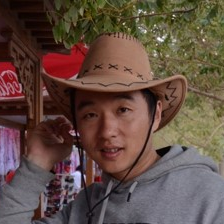Linking Metamorphism with Orogenesis
A special issue of Minerals (ISSN 2075-163X). This special issue belongs to the section "Mineral Geochemistry and Geochronology".
Deadline for manuscript submissions: closed (28 July 2023) | Viewed by 5665
Special Issue Editors
Interests: metamorphic petrology; structural geology; tectonics
Special Issue Information
Dear Colleagues,
Orogenesis is a complex concept that refers not only to mountain building but also to the formation of continental crust and major orogenic structures. Regional metamorphic rocks, which occupy the orogenic core, and hence, are the most important element of an orogen, contain information that may be used to determine the tectonothermal evolution of the crust in orogenic systems. Through observations of modern active convergent plate margins and comparisons with ancient analogues, two types of orogenesis have been suggested: the oceanic subduction-related accretionary type and the continent–continent collision type. The former is characterized by low-T/high-P metamorphism along the subduction interface and high-T/low-P metamorphism in the overriding island (continent) arc. In contrast, collision-type orogenesis is characterized by the formation of high–ultrahigh-P metamorphism, and Barrovian-type metamorphism is related to continental subduction and collision.
This special Issue aims to contribute to existing knowledge of the links between metamorphism and different types of orogenesis, and to decipher tectonothermal evolution from subduction–accretion to collision in the continental orogenic belt.
Dr. Jianxin Zhang
Dr. Shengyao Yu
Guest Editors
Manuscript Submission Information
Manuscripts should be submitted online at www.mdpi.com by registering and logging in to this website. Once you are registered, click here to go to the submission form. Manuscripts can be submitted until the deadline. All submissions that pass pre-check are peer-reviewed. Accepted papers will be published continuously in the journal (as soon as accepted) and will be listed together on the special issue website. Research articles, review articles as well as short communications are invited. For planned papers, a title and short abstract (about 100 words) can be sent to the Editorial Office for announcement on this website.
Submitted manuscripts should not have been published previously, nor be under consideration for publication elsewhere (except conference proceedings papers). All manuscripts are thoroughly refereed through a single-blind peer-review process. A guide for authors and other relevant information for submission of manuscripts is available on the Instructions for Authors page. Minerals is an international peer-reviewed open access monthly journal published by MDPI.
Please visit the Instructions for Authors page before submitting a manuscript. The Article Processing Charge (APC) for publication in this open access journal is 2400 CHF (Swiss Francs). Submitted papers should be well formatted and use good English. Authors may use MDPI's English editing service prior to publication or during author revisions.
Keywords
- metamorphism
- orogenesis
- tectonothermal evolution
- subduction
- exhumation
- collision






